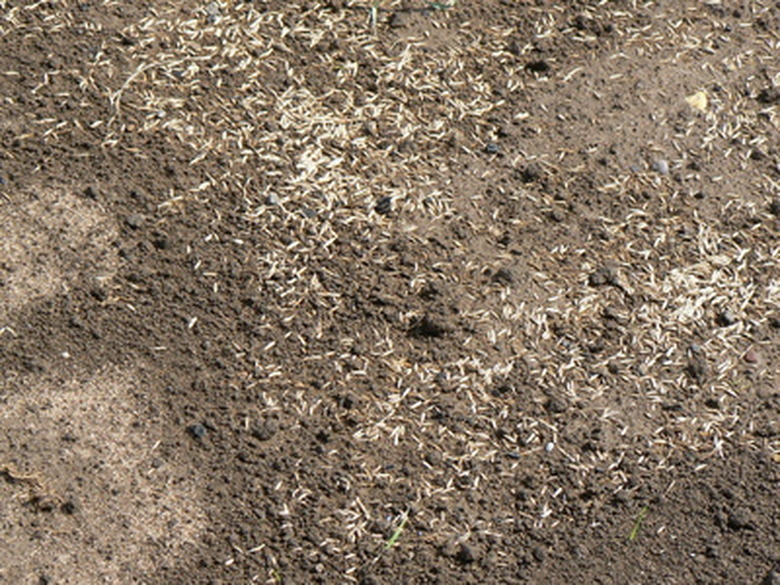Storing Grass Seed
If you plant your own grass by seed, you may be left with leftover seeds. One solution is to simply spread the seeds throughout your yard, but this is a waste of seeds. The best thing to do with leftover seeds is to store them for later use. When you store seeds, you save money on the cost of seeds since you have to buy less the following year. As long as it is stored properly, grass seed can be saved for up to 10 months.
Step 1
Put the grass seed in a cloth sack. Cloth is good for storing seeds, as it allows air to flow through, which in turn reduces the risk of mold growth. You can keep the seeds in the original packaging if it is still intact.
- If you plant your own grass by seed, you may be left with leftover seeds.
- As long as it is stored properly, grass seed can be saved for up to 10 months.
Step 2
Store the seeds in a refrigerator. A cold, dry environment is best for storing seeds. If you do not have room in a refrigerator, store the seeds in the coolest, driest area of your house, such as a basement. Since basements are often damp, you should put a small, open box of baking soda in the seed bag to absorb excess moisture.
Step 3
Plant the seeds within eight to 10 months. The longer the seeds sit, the less likely they are to germinate, so use them as soon as possible.
Grass Seed?
With fewer germinating weed seeds and reliably mild temperatures, you may want to seed your new lawn in the early fall. All plants large and small need ample space for root spread and your grass seed is no different than a towering tree or simple garden flower. Limited nutrients cause the grass stems and blades to have a thin shape. When you apply too much grass seed, each individual seed does not have the same access to the soil; some piled on top of other seeds may not touch the soil at all. Germination cannot successfully occur if the seed does not have soil contact. Normal grass seed germination typically ranges between one and three weeks, but stacked seeds on the soil make this time period significantly longer. With a good starter fertilizer and a moist soil structure, a proper seed application uses a broadcast spreader as you walk in one direction across your yard.
- Store the seeds in a refrigerator.
- All plants large and small need ample space for root spread and your grass seed is no different than a towering tree or simple garden flower.
Things Needed
- Cloth sack
- Refrigerator
- Baking soda
References
- AllAboutLawns.com: Planting by Seed
- University of Minnesota Extension: Lawn Renovation
- University of Arizona Cooperative Extension: Spring Overseeding for High Elevation Cool Season Lawns
- Lowe's: Seed Your Lawn
- This Old House: When to Plant Grass Seed
- Fine Gardening: Genus Festuca
- North Dakota State University: Phytoremediation-Lolium Perenne
